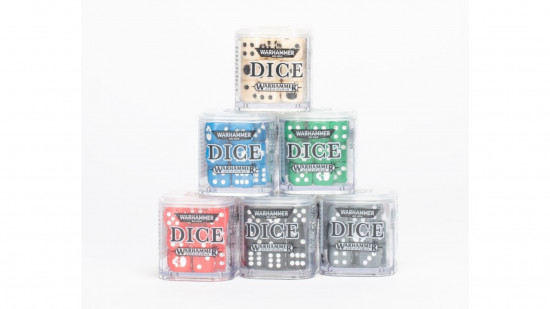I’ve recently returned to Warmachine after a hiatus of almost a decade, and – among the many feelings of nostalgia – one thing about it has struck me as particularly obvious. When it comes to those all-important dice rolls that you know will determine the outcome of a game, they’re so much more satisfying in Warmachine than in Warhammer 40k.
I’m not criticising Warhammer 40,000 or the Warhammer 40k dice system here: it has a very different set of design goals from Warmachine. 40k sells a fantasy of excess, where hordes of infantry get mown down by fusillades of bullets and demons rip apart tanks with their bare claws. Part of the fun of certain Warhammer 40k factions – particularly the Orks – is throwing absolute buckets of dice onto the table.
Over the course of a 40k match your dice results will even out to conform to statistical averages. But the fewer dice you roll, and the more important they are, the more swingy the game feels, because there’s less opportunity for the results to get smoothed out by the weight of dice being rolled.
This is really obvious when the Adeptus Custodes face off against the T’au Empire or Astra Militarum. The Custodes’ 4+ invulnerable saves have a massive impact on whether or not their forces survive the enemy shooting phase, while the Astra Militarum’s 4+ rolls to hit with their lasguns are all but meaningless.
This means that the most dramatic dice rolls of the game – the make or break attacks from your most powerful weapons, invulnerable saves for your Space Marine heroes, and so on – can feel the most arbitrary and the least in your control.
Warmachine uses a 2d6 resolution system. To hit a model with an attack, you roll 2d6 and add your ranged or melee attack value, aiming to equal or beat the target’s defense. To damage the model, you roll 2d6 and add the attack’s strength, subtracting the target’s armor.
The result of rolling 2d6 ranges from 2 to 12, but each result isn’t equally likely: you’re most likely to roll a result in the middle and least likely to roll a result at the extremes, either high or low. So while 40k smooths out the randomness of its dice by making you roll lots and lots of them, in Warmachine each individual dice roll has a built in mitigation against swingy results.
The result is a game that has fewer dice rolls, with more riding on them, that doesn’t feel quite so much at the mercy of fate. All the drama, with far fewer feel bad moments when the dice abandon you.
Again, this isn’t a superior dice system overall, just a different one. Warmachine’s system can’t accommodate speed-rolling, so while you can play fairly big games of it, it can’t handle the sheer number of models that 40k does. But if you want a game that’s all about those dramatic moments between elite units, it’s certainly worth a look.
Warmachine received a new starter set late last year, and I’ve been testing a free sample copy I received from new publisher Steamforged Games. Wargamer can also recommend lots of other miniature wargames that are well worth your time if you’re just looking for something different.
Source: Wargamer




